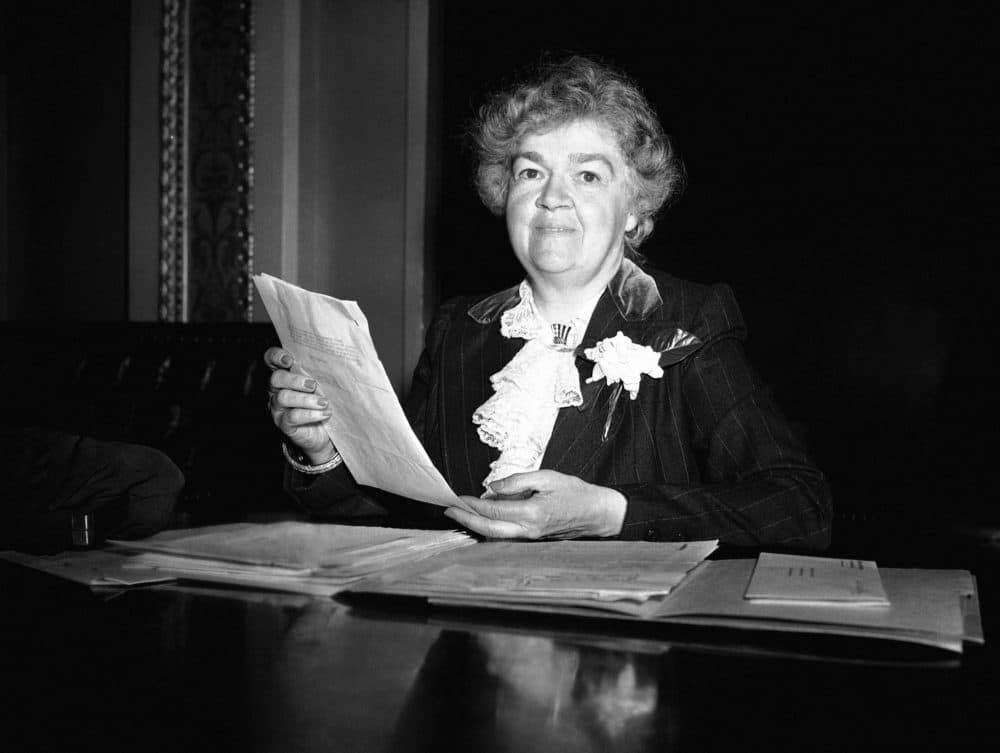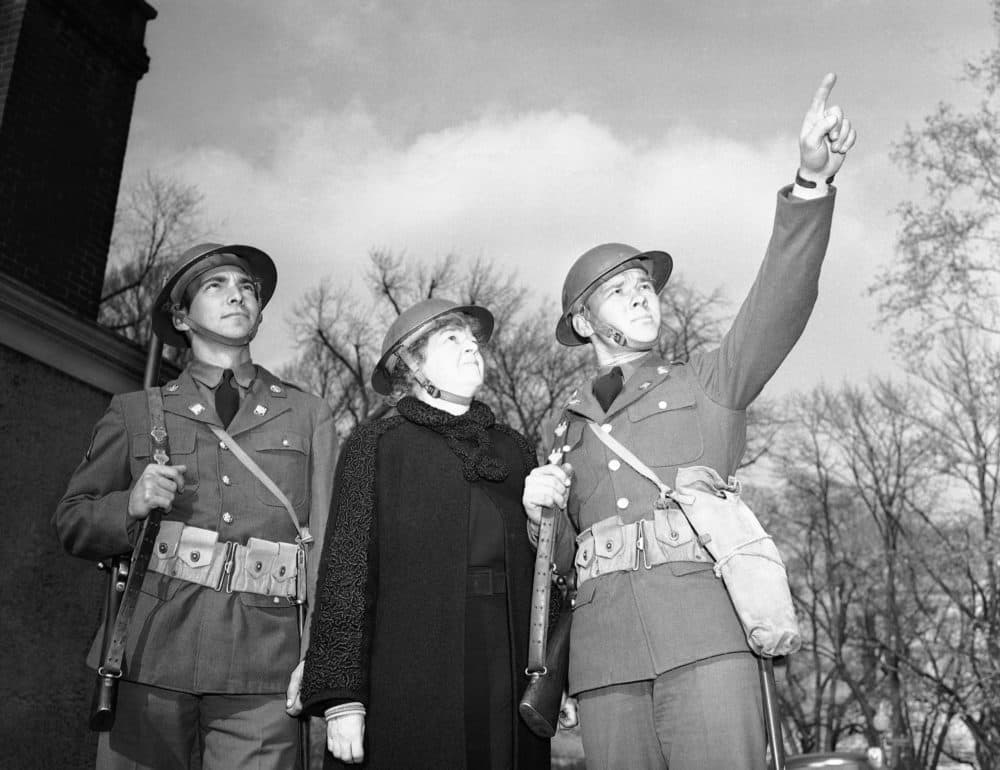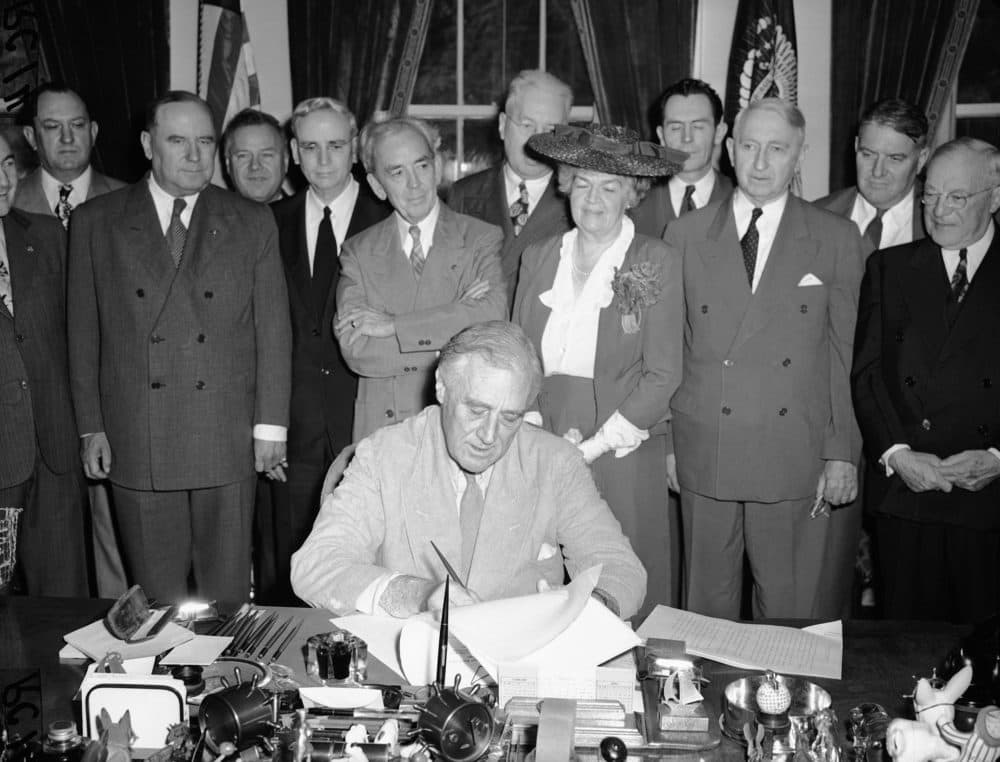Advertisement
Student's Winning Essay Remembers Trailblazing Mass. Congresswoman
Resume
The U.S. House of Representatives has more women — 102 — than at any other time in history.
They're blazing a trail for women in politics. But their trail was paved, in part, by a Massachusetts congresswoman who served generations ago. Her name was Edith Nourse Rogers.
Rogers' name was front and center again this past weekend, when the John F. Kennedy Library Foundation gave the winner of its Profile in Courage high school essay contest an award for his piece about the late congresswoman.
The prize went to Elazar Cramer. He’s about to graduate from the Maimonides School in Brookline. And he’s interning right here at WBUR. He spoke to All Things Considered.
Lisa Mullins: What made Rogers such a compelling person?
Cramer: Rogers stood out to me because she was very principled. She was driven to help people who were less fortunate than her, even though her background was very privileged.

She was born in Saco, Maine, to a prominent New England Brahmin family. She was a direct descendant of passengers on the Mayflower, John Adams and even one of the women hanged in the Salem witch trials, Rebecca Nurse.
Rogers and her husband, John Jacob Rogers, were Republicans. He was a congressman; that's how she first got involved in politics. When he died in 1925, she ran for his seat.
She was easy to underestimate in the beginning. She was viewed as this patrician woman, wearing her signature gardenia and a fur stole.
This is how Patricia Fontaine described her. Fontaine is from UMass Lowell, and is writing a biography of Rogers: "People would say, 'Oh, she's just this wonderful cuddly old woman with fluffy hair,' but she was tough."
Rogers took on the issues of war and neutrality, military veterans and the Jewish refugee crisis. This is what I really focused on in my essay. She was one of the first members of Congress to speak out against the Nazis.
In November 1938, the Nazis began torching synagogues and ransacking Jewish businesses and homes. This was called Kristallnacht — "the night of broken glass" — and it's when Nazi violence against Jews really became open and public.
Rogers was really horrified. So she and a Democratic senator from New York co-sponsored a bill — the Wagner-Rogers Bill — to admit 20,000 additional child refugees from Germany into the U.S.
There was a lot of support. But the bill faced criticism. She even received death threats from Nazi sympathizers.
While the bill was in Congress, 80 years ago this month, a passenger ship called the St. Louis carried hundreds of Jewish refugees from Hamburg across the Atlantic to Cuba. But Cuba wouldn't honor its visas. So all eyes fell on the U.S. to take them in.
Democratic Sen. Robert Reynolds of North Carolina was the most vocal opponent. Here's what he said in a speech: "Let's keep America for our boys and girls. Let's give American jobs to American citizens. .... Our country, our citizens, first."
The bill went nowhere, and the ship the St. Louis was sent back to Europe with almost all of the refugees on board.
Rogers' dedication to veterans issues started on the ground — literally — and grew from there. How so?
She went to battlefields in France and Italy during both World Wars to see how the wounded were being taken care of. In WWI she was a nurse, and then in WWII when she was in Congress, she went on a secret trip to see what was going on. And she spoke publicly about what the U.S. owed its veterans.

Rogers sponsored about 1,200 bills during her time in Congress and about half concerned military veterans issues.
"She was one of the co-sponsors of the GI bill," UMass Lowell's Fontaine said. "She wanted to make sure that it was the best deal that Uncle Sam ever made to veterans. And she wanted to make sure it would be colorblind for veterans going into universities. This was her whole career."
She also helped create the Women's Army Corps and in fact the Department of Veterans Affairs itself. The VA hospital in Bedford is named after Rogers.
We should also mention that Rogers was a strong anti-communist as early as the 1930s and a supporter of McCarthyism. She also supported prohibition.
Yeah. So those positions aren't as universally supported now. But just like her other positions, she really believed in them, and they really had their root in her belief that she had to do what was right.
This segment aired on May 22, 2019.